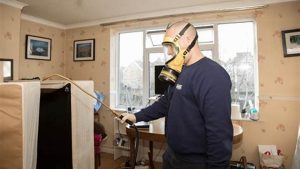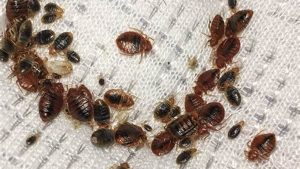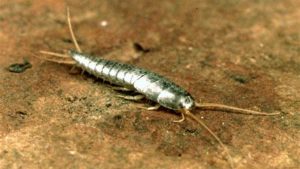Bed bugs are a common nuisance, but did you know that many other bugs look just like them? Misidentifying these pests can lead to ineffective treatments and prolonged infestations. Let’s dive into how to correctly identify bed bugs and distinguish them from their look-alikes.
How to Identify Bed Bugs

Identifying bed bugs accurately is crucial for effective pest control. These tiny insects are usually brown, oval-shaped, and about the size of an apple seed. They don’t jump or fly but move quickly over floors, walls, and ceilings. Look for rusty or reddish stains on bed sheets or mattresses caused by bed bugs being crushed, dark spots of excrement, eggs, and shed skins.
Common Bugs Mistaken for Bed Bugs
1. Bat Bugs
Bat bugs are nearly identical to bed bugs, making them tough to distinguish without a microscope. They have longer fringe hairs on their pronotum and are usually found where bats roost. If bats are present in your home, you might be dealing with bat bugs.
2. Swallow Bugs
Similar to bed bugs, swallow bugs have longer hairs and different antennal segments. They typically reside near nesting swallows but can bite humans if their primary hosts are absent.
3. Carpet Beetles
Carpet beetles are often mistaken for bed bugs due to their small, round shape. However, they have a more dome-shaped body and are usually found in carpets and wardrobes, feeding on natural fibers. Unlike bed bugs, they do not bite humans.
4. Spider Beetles
Spider beetles are small, shiny, and have long legs, making them look somewhat like bed bugs. They are usually found in dark, moist places and can be distinguished by their long antennae and globular abdomen.
5. Booklice (Psocids)
Booklice are tiny, soft-bodied, and translucent, often found in damp environments. They are softer and more translucent than bed bugs and do not bite humans.
6. Baby Cockroaches
Baby cockroaches, or nymphs, are small, wingless, and reddish-brown, resembling bed bugs. They have narrow, pill-shaped bodies and long antennae, and are typically found in dark, enclosed spaces near food and water.
7. Fleas
Fleas are small, reddish-brown, and vertically flattened. They are found on pets and in carpets, and unlike bed bugs, they can jump and have long, spiny legs.
8. Ticks
Ticks are flat and round before feeding and have eight legs. They burrow their heads into the skin when biting and are usually found on animals and in grassy or wooded areas.
9. Head Lice
Head lice are small, six-legged insects found on the scalp. They are confined to human hair and bedding, and are smaller than bed bugs.
10. Furniture Beetles
Furniture beetles have small, disc-shaped bodies with long antennae. They are found in wooden furniture and do not feed on blood, making them different from bed bugs.
Prevention and Treatment
Accurate identification is the first step in effective pest control. If you’re unsure, consult with a pest control professional. To prevent infestations, regularly inspect second-hand furniture, reduce clutter, and vacuum frequently. Use protective covers on mattresses and box springs to eliminate hiding spots for bed bugs and their look-alikes.
Key Information
key facts and figures about bed bugs and common bugs that look like them:
| Characteristic | Bed Bugs | Bat Bugs | Carpet Beetles | Fleas | Spider Beetles |
|---|---|---|---|---|---|
| Size | 3/16 to 1/4 inch | Similar to bed bugs | 1/16 to 1/8 inch | 1/16 to 1/8 inch | 1/16 to 1/4 inch |
| Color | Rusty brown to reddish-brown | Similar to bed bugs | Varied patterns, often black or brown | Reddish-brown | Reddish-brown to black |
| Shape | Oval, flat | Oval, flat | Round, oval | Narrow, flat sides | Round body, long legs |
| Distinguishing Features | No wings, six legs | Longer fringe hairs on pronotum | Dome-shaped body, patterned | Long hind legs for jumping | Spider-like appearance |
| Habitat | Near sleeping areas, furniture | Near bat roosting sites | Carpets, fabrics | On pets, carpets | Dark, moist areas |
| Feeding Habits | Blood-feeding | Blood-feeding (prefer bats) | Feed on natural fibers | Blood-feeding | Scavengers |
| Prevalence | 20% of US homes annually | Less common, tied to bat presence | Common household pest | Common on pets | Less common |
| Bites | Itchy welts, often in lines | Similar to bed bugs | Do not bite humans | Itchy bites, often on ankles | Do not bite humans |
| Infestation Signs | Blood spots, fecal matter on bedding | Similar to bed bugs | Shed skins, damage to fabrics | Flea dirt, pet scratching | Damage to stored foods |
Conclusion
Proper identification of bed bugs and their doppelgängers is essential for effective treatment. By understanding the differences between these pests, you can take the right steps to protect your home and ensure peace of mind. Stay vigilant and informed to keep your living space pest-free.
Frequently Asked Questions About Bed Bugs and Look-Alikes
What do bed bugs look like?
Bed bugs are small, oval-shaped insects about the size of an apple seed. They’re reddish-brown in color and have a flat body. Adult bed bugs are typically 3/16 to 1/4 inch long.
How can I tell if I have bed bugs or another type of bug?
Look for these signs:
- Small, reddish-brown bugs in the seams of your mattress or furniture
- Tiny white eggs or eggshells
- Rusty or dark spots on bedding (bed bug excrement)
- A sweet, musty odor
If you’re unsure, it’s best to consult a pest control professional for accurate identification.
What are some common bugs that look like bed bugs?
Common bed bug look-alikes include:
- Bat bugs
- Carpet beetles
- Spider beetles
- Booklice
- Cockroach nymphs
- Fleas
- Swallow bugs
- Ticks
How do I distinguish bed bugs from carpet beetles?
Carpet beetles are oval-shaped like bed bugs, but they have a more dome-shaped body and are often patterned. Unlike bed bugs, carpet beetles don’t bite humans and are usually found in carpets and fabrics, not beds.
Are bed bugs a sign of poor hygiene?
No, bed bugs are not related to cleanliness. They can infest any home, regardless of its cleanliness level. They’re attracted to warmth, blood, and carbon dioxide, not dirt or grime.
Do bed bugs fly or jump?
No, bed bugs cannot fly or jump. They crawl at a moderate speed, similar to an ant.
How can I prevent bed bug infestations?
To prevent bed bugs:
- Inspect second-hand furniture before bringing it home
- Use protective covers on mattresses and box springs
- Reduce clutter in your home
- Vacuum frequently
- Be cautious when traveling and inspect hotel rooms
What should I do if I suspect a bed bug infestation?
If you suspect bed bugs:
- Thoroughly inspect your bedding and furniture
- Wash and dry all fabrics on high heat
- Vacuum thoroughly
- Consider using bed bug-proof encasements for mattresses and box springs
- Contact a professional pest control service for proper identification and treatment
Remember, while DIY methods can help, professional pest control is often the most effective way to eliminate a bed bug infestation


